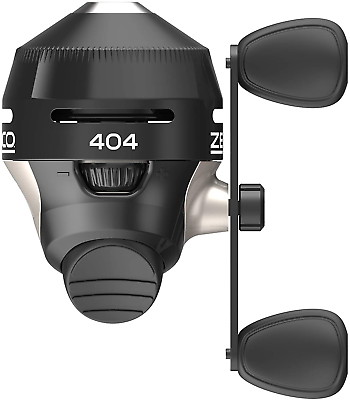In a world that thrives on rapid technological advancements and massive production lines, the concept of a “mini factory” might seem quaint or even retro. However, these compact and agile manufacturing setups represent a fascinating intersection of traditional craftsmanship and modern technology. They embody the spirit of innovation and efficiency, proving that size doesn’t always dictate success or creativity. This article delves into the intricacies of running a mini factory, exploring its advantages, challenges, and the impact it has on both producers and consumers.
The Genesis of My Mini Factory
The journey of my mini factory began with a simple idea: to create high-quality, handcrafted products in a small, efficient space. Unlike large-scale manufacturing facilities that churn out vast quantities of goods, my mini factory focuses on producing limited runs of specialized items. This approach allows for greater flexibility, creativity, and attention to detail.
The initial inspiration came from observing the shift in consumer preferences towards unique, personalized products. As mass production dominated the market, there was a growing desire for items that stood out, offered a personal touch, and reflected individual tastes. The mini factory concept was born from this demand, aiming to bridge the gap between artisanal craftsmanship and modern manufacturing.
The Layout and Design
One of the defining features of a mini factory is its efficient use of space. Unlike traditional factories that require vast areas and heavy machinery, a mini factory is compact and optimized for versatility. The layout is carefully designed to maximize workflow and minimize wasted space.
In my mini factory, the design incorporates modular workstations that can be easily reconfigured based on the current project. Each workstation is equipped with essential tools and machinery, allowing for seamless transitions between different stages of production. This flexibility is crucial for handling diverse projects and adapting to changing market demands.
The Technology Factor
Modern mini factories are not just about small size; they also embrace cutting-edge technology. In my mini factory, a blend of traditional techniques and advanced technology plays a vital role. From 3D printers and CNC machines to digital design software, these tools enhance precision and efficiency.
For instance, 3D printing has revolutionized prototyping and production in the mini factory. It allows for rapid creation of prototypes, reducing the time and cost associated with traditional methods. CNC machines, on the other hand, provide precise cutting and shaping, ensuring high-quality results with minimal waste.
The Craftsmanship Element
Despite the technological advancements, craftsmanship remains at the heart of the mini factory. Each product is crafted with a focus on detail and quality, reflecting the skills and expertise of the artisans involved. The smaller scale of production allows for more hands-on involvement, resulting in products that are both functional and aesthetically pleasing.
The integration of craftsmanship with modern technology creates a unique synergy. For example, while a CNC machine might handle the bulk of cutting, finishing touches are done by hand, adding a personal touch that distinguishes each item. This combination ensures that every product not only meets high standards but also carries a sense of individuality.
Sustainability and Efficiency
In an era where environmental concerns are paramount, mini factories offer a sustainable alternative to large-scale manufacturing. The smaller scale of production reduces energy consumption and waste, aligning with eco-friendly practices.
In my mini factory, sustainability is a core principle. We prioritize the use of recycled materials and energy-efficient machinery. Additionally, the compact size of the factory minimizes the need for extensive transportation and logistics, further reducing the environmental footprint.
Efficiency is another key advantage of the mini factory model. The streamlined production process and minimal overhead costs contribute to overall efficiency. This efficiency extends beyond the production line; it also impacts inventory management and customer service. With fewer layers of bureaucracy, decision-making is faster, and responses to customer feedback are more agile.
The Challenges
Running a mini factory is not without its challenges. One of the primary difficulties is balancing technology with traditional craftsmanship. While technology enhances efficiency, it can sometimes overshadow the human element of production. Ensuring that the artisanal touch is not lost in the pursuit of technological advancements requires careful consideration and planning.
Another challenge is scaling production. Mini factories are designed for limited runs, which can be a limitation when demand exceeds capacity. Finding the right balance between meeting demand and maintaining quality can be a delicate task.
Financial constraints also play a role. The initial investment in technology and equipment can be significant, and managing costs while maintaining profitability requires astute financial planning. Additionally, competing with larger manufacturers on price can be challenging, given the higher costs associated with smaller-scale production.
The Impact on Consumers
For consumers, the mini factory model offers several benefits. First and foremost, it provides access to unique and customized products. In a world where mass-produced items are ubiquitous, having the option to purchase something distinct and tailored to individual preferences is highly appealing.
Moreover, products from mini factories often come with a story. Consumers appreciate knowing that their purchase supports smaller-scale operations and skilled artisans. This connection adds value to the product and fosters a sense of community and authenticity.
The Future of Mini Factories
As we look to the future, the role of mini factories is likely to grow. Advances in technology will continue to enhance their capabilities, making them even more efficient and versatile. Additionally, as consumers increasingly value sustainability and uniqueness, mini factories are well-positioned to meet these demands.
The mini factory model also aligns with the growing trend of local production and “buy local” movements. By producing goods closer to the consumer, mini factories reduce transportation costs and contribute to the local economy. This shift towards localized manufacturing is expected to gain momentum in the coming years.
Conclusion
In conclusion, my mini factory represents a harmonious blend of tradition and innovation. It showcases how small-scale production can thrive in a modern world dominated by large-scale manufacturing. Through careful design, technological integration, and a commitment to craftsmanship, mini factories offer a viable and exciting alternative to conventional production methods.
While challenges exist, the benefits of running a mini factory—ranging from sustainability and efficiency to unique, high-quality products—make it a compelling model for the future. As technology continues to evolve and consumer preferences shift, the mini factory stands poised to play an increasingly important role in the world of manufacturing.
By embracing the principles of flexibility, creativity, and sustainability, mini factories not only carve out their niche in the market but also pave the way for a new era of production that values both innovation and tradition.









